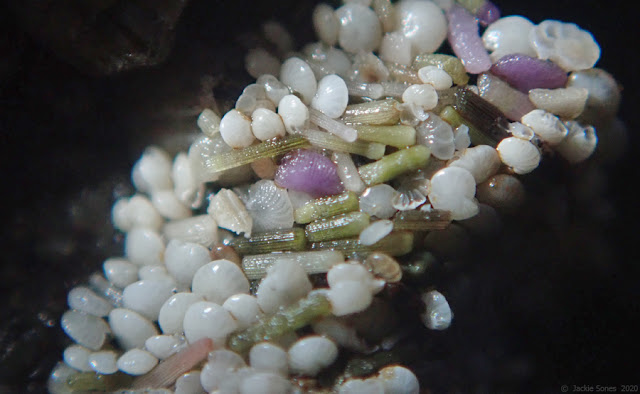Yesterday (20 January 2020), I spent a little time watching Surfbirds (Calidris virgata, formerly Aphriza virgata) along the rocky outer coast. Here's a bit of a photo journal of Surfbird behavior:
Resting on the rocks after a large wave splash.
Feeding on a juvenile mussel.
Bathing in a tidepool.
Aggressive behavior, during which the two birds were very vocal.
I'm curious about this aggressive behavior. The birds were bathing along the edge of a very large tidepool. There was plenty of space for all of the birds in the flock, but aggressive interactions between Surfbirds seem fairly frequent in these situations (while the birds are bathing). I wonder if the intense interactions could be more about social organization and relationships, rather than competition for space?
The birds splash, call loudly, spread their wings, raise their tails, rise up, or lean over, open their bills, jab at each other, and sometimes even grab each other's bills (Ouch!).
Check out the serrations along the edge of the bill in the photo below. The sharp edges are probably useful for grasping prey, but perhaps they're also helpful in these interactions:
Even though Surfbirds are generally seen walking on rocks in our area, this pool was deep enough that sometimes the Surfbirds would swim across it. A different perspective!
I felt grateful for the opportunity to spend some time observing these Surfbirds. There's always something to learn!


















































